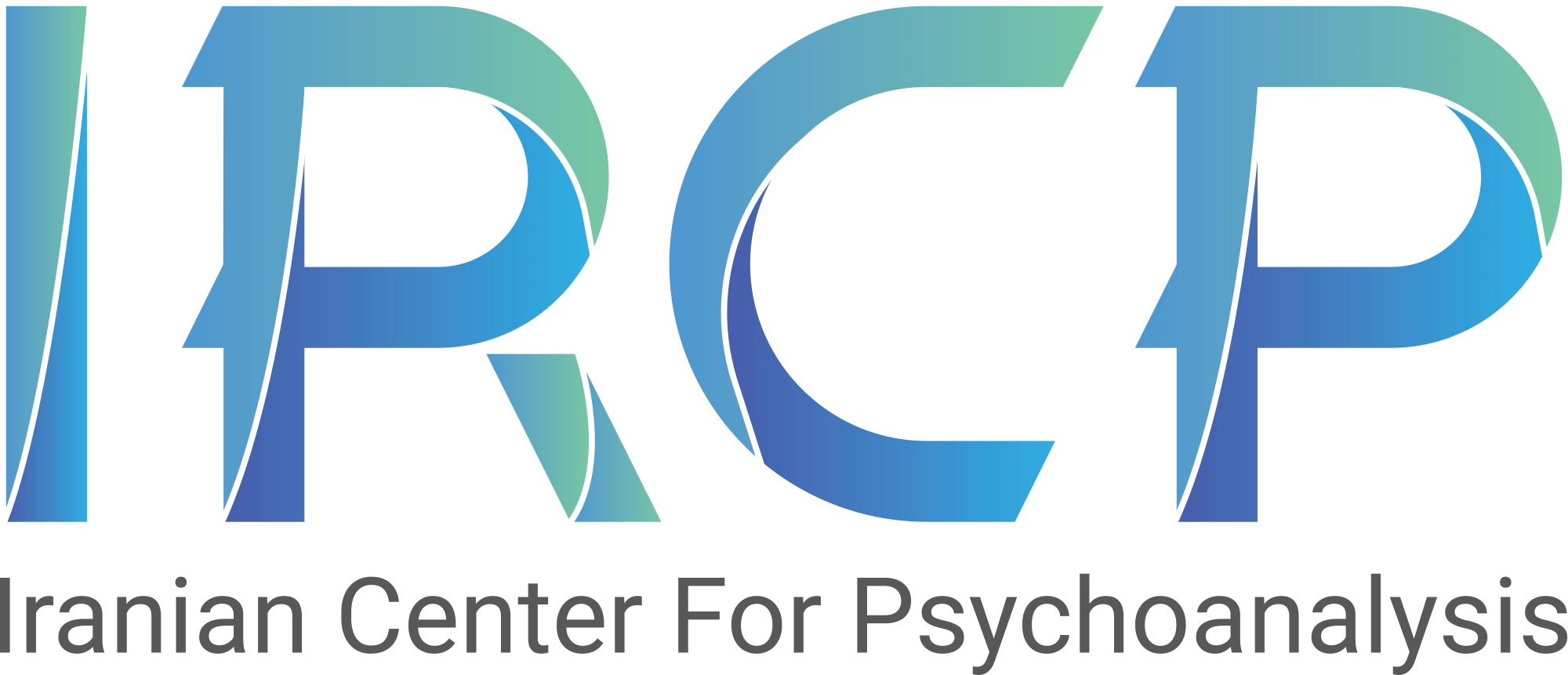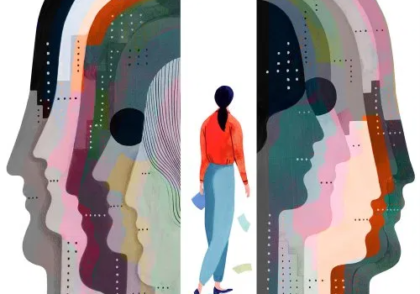اختلال شخصیت خودشیفته

اختلال شخصیت خودشیفته یک مسئله سلامت روانی قطعی است و از هر دو جنبه بیولوژیکی و اجتماعی فرد را تحت تاثیر قرار می دهد. این مقاله آخرین تحقیقات بین المللی در مورد علت شناسی، انواع فرعی اختلال شخصیت خودشیفته و راهبردهای درمانی مرتبط با اختلال شخصیت خودشیفته را بررسی می کند. اختلال شخصیت خودشیفته با خود بزرگ بینی، اشتیاق به تحسین و فقدان شفقت تعریف می شود. این شامل دو زیرگروه بزرگ و آسیب پذیر است. تأثیر خودشیفتگی بر عزت نفس افراد، کنترل خود از طریق مرور تحقیقات قبلی بر روی جمعیت چین مورد بررسی قرار گرفت. همچنین ارتباط بین سبک فرزندپروری، شخصیت خودشیفتگی و رابطه والدین فرزند نیز مورد بحث قرار گرفت.
نتایج نشان داد که شکل گیری اختلال شخصیت خودشیفته تحت تأثیر عوامل محیطی و اجتماعی بوده است.
درمان روانشناختی طولانی مدت درمان اصلی اختلال شخصیت خودشیفته است. دارو یک گزینه درمانی اولیه نیست و برخی داروهای ضد افسردگی ممکن است علائم را تشدید کنند. چالش ها و جهت های مطالعه در پایان مشخص شده است، مسیرهای بالینی فراوانی در مورد مطالعه بیولوژیکی اختلال شخصیت خودشیفته مورد نیاز است و انتظار می رود تحقیقات بیشتر در مورد انواع فرعی اختلال شخصیت خودشیفته انجام شود.
Table of Contents
ToggleNarcissistic personality disorder: A general review
Rong Chen
Business school, University of Exeter, Exeter, EX4 4QJ, the United Kingdom
Abstract. Narcissistic personality disorder is a severance mental health issue, and affect person from both biological and social aspects. The article reviewed the latest international researches about the etiology, subtypes of narcissistic personality disorder, and related treatment strategies of narcissistic personality disorder. Narcissistic personality disorder is defined by an inflated self-importance, eagerness for admiration, and lack of compassion. It encompasses two subtypes, grandiose and vulnerable. Impact of narcissism on individuals’ self-esteem, Self Control was examined through reviewing prior research on Chinese population. Moreover, correlation between parenting style, narcissistic personality and parentchild relationship was also discussed. The result revealed that the formation of narcissistic personality disorder was influenced by environmental and social factors. Long-term psychological therapy is the main treatment for narcissistic personality disorder. Medication is not a primary treatment option, and certain antidepressants may exacerbate symptoms. The challenge and study directions have been identified in the end, abundant clinical trails on biological study of narcissistic personality disorder are needed, and the further researches on subtypes of narcissistic personality disorder are expected
1 Introduction
In the past, narcissism was firstly cognized as a clinical entity by Ellis and be seen as self-sexualization or autoerotism [1]. In 1910, the psychological aspect of the narcissism was listed by Freud, the libido development. All infants have the primary narcissism and focus on them own, while adults would have better control of their libido between themselves and others [2]. Till 1960, narcissistic personality disorder (NPD) was defined as a kind of pathological self-structure [3]. In modern age, DSM-4 might mainly focus on the traits of NPD, while DSM-5 defined NPD in a new model of categorical and dimensional combination [4].
NPD is now categorized as personality disorder cluster B, as characterizing by the personal features of unreasonably high value of oneself, a great need for admiration and recognition from others, and lack of empathy and caring of others. A person with NPD is likely to experience difficulties in all aspects of one’s life, such as relationships, daily work and can even affect everyone with whom one interacts [5].
Comparing NPD and other personal disorder, some similarities can be found. As Ronningstam states in 2005, NPD shares some similar traits with other category of personality disorders. Both NPD and antisocial personality disorder include the belief of ones’ invulnerability, overreaction of criticism, etc. [6]. Comparing NPD with histrionic personality, individuals with them are all dramatic and have attractive behaviour. Individuals with NPD and borderline personality disorder have similar sensitiveness and rage to criticism [6]. Thus, the diagnostic criteria have been questioned
Corresponding author: we******@*******om.cn
for the limitation and the narcissistic pathology is still complicated.
The current studies of NPD still primarily base on the formulations and clinical experience. Abundant research of NPD on the etiology, diagnosis and treatment would still be expected for the clinicians. Therefore, this study aims to collect the most cutting-edge research on NPD and the related recommendation.
2 Methodology
The high-quality international research articles have been reviewed to understand the etiology of NPD, the subtypes of NPD and the causes, the impact of the NPD and the current treatments.
3 Results and discussion
3.1 Etiology
| © The Authors, published by EDP Sciences. This is an open access article distributed under the terms of the Creative Commons Attribution License 4.0 (https://creativecommons.org/licenses/by/4.0/). |
Multiple elements would be involved as the etiology of NPD. Some studies suggest genetic predisposition, including inherited variations link with sensitivity, aggressiveness, frustration tolerance and low anxiety, etc., can be associated with NPD [7]. Meanwhile, from the neurobiology perspective, Harry states that molecule of an oxidative stress biomarker named 8-OHDG (stand for 8-hydroxy-2-deoxyguanosine), has strong contribution to NPD [8]. From a psychological perspective, the negative childhood experience such as unacceptable and fragile ego, misperception of emotional state may be associated with NPD development. The childhood trauma can be recognized in different forms, such as emotional form and physical form, including sexual abuse [9]. In addition, dismissive or avoidant attachment model can contribute to the development of NPD as well [10].
3.2 The subtypes of NPD
According to DSM-5, NPD is described as a single pattern of symptoms, Ngwu and his team also claim the two main subtypes of NPD [10]. The overt type known as grandiose is very close to the description from DSM-5, seeking for the attention and entitlement and lacking of obvious anxiety. Individuals with inner self-grandiosity and exaggerated feeling is directly expressed as an overt desire to show, and needs to be affirmed, paid attention to and envied by others. Grandiose narcissists are showing happiness, positive, optimistic, confident, and satisfied in their own world than implicit narcissists because of their consistent internal and external performance. The covert type also called vulnerable type catch less attention in diagnosis. Vulnerable type can be a fragile subtype, more in the subconscious. There is an exaggerated sense of self, but the heart has a sense of inferiority, withdrawal, worry, depression, and there is actually dissatisfaction with the self. Vulnerable type often hide lofty views behind their shyness, public selfeffacement, and heightened sensitivity to slights. Explicit narcissist’s internal and external performance is consistent. Four dimensions of grandiose narcissism can be distinguished: desire for power, sense of privilege, superiority and self-admiration. There are three dimensions of Vulnerable narcissism: susceptibility, privilege and self-admiration. Grandiose subtype and vulnerable subtype are distinct but related [11]. Individuals with NPD may switch between these two subtypes or present the mixed status.
3.3 Impact of NPD
The detrimental impact of NPD can be recognized from mental health perspective, physical health effect and social impact. Obviously, individuals with NPD can experience a dramatic anxiety, depression and even suicidal thoughts when criticism or rejection come to them. The traits often co-occurring with physical health issue, such as drag abuse, eating disorder or sleeping disturbance. Individuals with NPD would deny any symptoms of illness to protect their imagination of perfection [12]. Also, people with NPD can have unsatisfactory behaviour in social aspect. They might cheat in working area, education or politics while bragging about themselves. Decrying others, confliction with others can happen normally. People with NPD may experience difficulties in relationship as with family members, partners, friends and working peers, they may try to manipulate or exploit others [10].
On the other hand, narcissists might have some “positive” effect on individuals, they are seeking for self-value and more tend to be successful persons somehow. They can be attractive by their confidence, their competitive and self-efficacy can accelerate to their success in both professional and personal field [13]. The narcissistic traits can also make people have less negative feeling, they might have less stress and depression [14]. According to the result of research from Willia, persons with NPD do usually have high achievement in their education and working task [15].
He Hui conducted detailed research on the narcissistic personality of college students to investigate the current situation and characteristics of narcissistic personality, the types of psychological defense mechanism and interpersonal relationship of contemporary college students. At the same time, the relationship between narcissistic personality, the types of psychological defense mechanism and interpersonal distress (ID) of college students is analyzed [11].
In this study, 800 questionnaires were sent out, 750 were gathered, 717 were valid, and the effective recovery rate was 89.6%. The samples ranged in age from freshmen to seniors and were selected at random from four universities (Panzhihua College, Chengdu Institute of Technology, Sichuan Normal University, and Sichuan Medical College) in the two cities of Panzhihua and Chengdu.
The average of the three dimensions of power desire, gradient narcissism, and vulnerable narcissism, when seen from the standpoint of the overall condition of narcissistic personality, was higher than three points (the median of the scale, which employed a five-point scale). The overall average score of vulnerable narcissism and the overall average score of grandiose narcissism were utilized to conduct the difference test. In college students, the average score for grandiose narcissism was significantly greater than the average score for vulnerable narcissism.
The overall scores of grandiose and vulnerable narcissism differed significantly between male and female college students. Gender differences in the four dimensions of overt narcissism were found to be significant only in the need for power dimension. Men and women differ significantly in implicit privilege (IP) across the three aspects of vulnerable narcissism, but not significantly in susceptibility or implicit self-admiration. College students of different genders exhibit grandiose narcissism and vulnerable narcissism in significantly different ways. When it comes to both forms of narcissism, male students exhibit much higher levels than female students. Gender differences exist in the privilege component of implicit narcissism (IN) and the power factor of overt narcissism is . Males and females differed greatly from one another. The total score of overt narcissism and the overt narcissism superiority factor of college students from various locations differ significantly, and urban students’ overt narcissism and superiority factor are significantly greater compared to those of rural students. Among college students studying various fields, there are notable variations in the overall amount of explicit narcissism, power factor, and privilege factor. Students in the arts, sciences, and engineering have a substantially raised power desire factor and a significantly higher level of explicit narcissism than those students in the humanities and sciences or medicine. Students studying liberal arts are considered much less privileged than students studying science. The implicit sense of privilege factor and the vulnerable narcissistic personality total score of college students with different majors differ significantly. Upon conducting multiple comparison analyses, the study finds that scientific and engineering students exhibit much greater levels of vulnerable narcissism than do liberal arts and medical students. Students studying science and engineering have a substantially greater IP factor than students studying liberal arts and medicine. The elements of privilege, superiority, and power craving in overt narcissism fluctuate significantly amongst college students in different grades. It is evident from many comparison analyses that first-year students have a significantly higher power desire factor than senior students. New students have a lower sense of superiority than sophomores and juniors, and juniors have significantly more than seniors. Freshmen have a substantially lower feeling of privilege than sophomores. Among college students of various grades, there are significant differences in the vulnerable narcissistic personality total score and IP variables. From a multiple comparing analysis, it is apparent that sophomore students have a substantially greater IN total score than first-year students and junior students. Regarding the implicit advantage, first-year students perform significantly less than second-year students.
From the perspective of defense mechanisms, it can be observed that college students of different majors have significant differences in immature defense mechanisms, mature defense mechanisms, intermediate defense mechanisms, and masking factors. After conducting several experiments, it has been possible to conclude that students studying science and engineering have an immature defensive system that is noticeably greater than that of students studying liberal arts and medicine. Medical students have an immature defense mechanism that is noticeably higher than that of liberal arts students. Science and engineering students score higher than arts students, medical students score higher than arts students, and medical students get the highest score in the developed defensive system.
According to the study’s statistical distribution, 287 participants, or 40.02% of the total, reported having high interpersonal skills and being rarely troubled. Of the overall population, 289 individuals (40.30%) reported being usually bothered and experiencing some interpersonal communication difficulties. Nineteen percent, or 141 persons, had problems with interpersonal communication.
The overall scores for both implicit and explicit narcissistic personalities had a substantial positive correlation with each of the three defense mechanisms. Power desire has a positive correlation with the immature, mature, and intermediate defense mechanisms from each dimension. There was an upward trend found between superiority and the immature, adult, and intermediate defense mechanisms. The sense of privilege is not significantly connected with the mature defensive mechanism, yet it has a positive association with the immature and intermediate defense mechanisms. A positive correlation was identified between the sensitive material and immature, mature, and intermediate defense mechanisms.
ID did not significantly correlate with the grandiose narcissistic personality total score. The explicit personality total score has a strong positive link with treating people and a large negative correlation with communication and making friends in terms of interpersonal characteristics. Overt narcissism, power craving, superiority, and self-admiration were found to be in a negative correlation with interpersonal scores, whereas privilege showed a significant positive correlation. Conversation, communication, and forming friendships are all inversely connected with the desire for power. Communication with the opposite sex and superiority have a strong negative link when it comes to communication, friendship, and discourse. There exists a favorable correlation between the four components of interpersonal communication and the experience of privilege. There is a strong negative association between self-admiration and communication with the opposite sex as well as discourse, communication, and friendshipbuilding. IN showed a strong positive association with the interpersonal total score and its components. Susceptibility, IP, interpersonal score, and interpersonal factors all showed a strong positive association. The following relationships were found to be negatively connected with self-admiration: interpersonal score, discussion, friendship-building , and interacting with the other sex.
The three defense mechanism dimensions, the IN total rating, and the ID total score have two significant correlations. This correlation is necessary to perform the mediation effect test. This study uses the sequential test method by the mediating effect test method to examine the mediating role of defense style on IN and ID. The outcomes show that vulnerable narcissism could be used as a significant predictor of the overall interpersonal score. One-step detection may be used to assess c. Moreover, coefficient is significant. Regression coefficient of the vulnerable narcissism regression coefficient was significant. Regression coefficients for both IN and immature defensive mechanisms were significant suggesting a substantial mediating influence. These variables were also included in the regression equation. Immature defensive mechanism has a partial mediating influence on IN and interpersonal relationships. 26.45% of the variation in the dependent variable may be explained by the 50.2% ratio of the mediating impact to the overall effect. It may be concluded that there is a substantial and partial mediation impact of mature defensive mechanism on IN and ID based on the regression coefficients c, a, b, and c’, which were all significant. The explanatory rate of mediating efficiency was 6.3%, and the mediating impact accounted for 0.2% of the overall effect. It may be concluded that the intermediate defense mechanism has a substantial and partial mediating influence on IN and ID since all of the regression coefficients—c, a, b, and c’—were significan. 18.2% of the overall effect was explained by the mediating effect. The explanation rate of intermediary efficiency was 11.83%.
In conclusion, there are notable disparities between the levels of grandiose and vulnerable narcissism among college students based on gender, with male students exhibiting much greater levels than female students. Boys exhibit a substantially greater level of implicit narcissistic sense of privilege and an explicit narcissistic desire for power than girls. These gender disparities are substantial. However, the study’s findings merely indicate that there are variations in IP between men and women, not in self-admiration. As a result, He Hui claims that, at its core, contemporary society is still ruled by men. Despite the long growth of feminism, society’s male-dominated structure has not changed. Males are raised in society from birth, and parents’ parenting styles—along with the impact of popular culture—are geared at helping their sons grow up to be strong, valuable members of the community. Males must be entrepreneurial, ambitious, and driven by a desire for status and power. The society also provides greater opportunity for males to take positions of authority. As a result of it, granting males greater leadership and control while simultaneously spoiling them by making them believe that they should have privilege from birth, that they are superior to others, and that they should have more possibilities.
In a similar research, Huang Yingxuan also released research to investigate the ways in which college students impact ID [16]. The questionnaire survey approach is used in this investigation. As subjects, 481 college students from various Xi’an institutions are employed. College students’ narcissistic personality characteristics, self-control (SC), and interpersonal relationship status were assessed SC. Data were gathered and processed for descriptive statistics, one-way analysis of variance, independent sample T-test for correlation analysis, and intermediate effect test using SPSS and its plug-in PROCESS.
For college students to enhance their future interpersonal relationships as well as their physical and mental health, examining interpersonal connection is very important. College students experiencing interpersonal connection problems are more likely to be narcissistic in the context of their families. It is important to teach children not to be overindulged or given special treatment as they are growing up since this can lead to narcissistic tendencies, low self-esteem, and difficulty exercising SC. and thereby have an impact on their physical, mental, and interpersonal relationships. To assist college students in understanding the important aspects of interpersonal relationships and therefore enhance their interpersonal communication skills, educational institutions might provide pertinent courses or popularize psychological concepts. In the individual aspect of students, they should have objective and positive self-evaluation to enhance self-esteem and SC ability, in order to be more popular in interpersonal activities. To sum up, in order to effectively reduce the interpersonal troubles of college students, group activities or individual counseling can be used to improve individual self-esteem and SC through training [16].
The findings indicated that the college students’ selfesteem was at the medium level, their grandiose narcissism score exceeded their vulnerable narcissism score, their trait SC score exceeded their scale score, their SC ability was subpar, and they were generally experiencing mild interpersonal disturbance. Second, there is no significant correlation found between college students’ explicit narcissism and interpersonal disruption, even though there is a negative correlation with trait SC and a positive correlation with self-esteem. Interpersonal discomfort, trait SC, and self-esteem all showed a negative correlation with IN. ID has been demonstrated to be negatively linked with trait SC. Vulnerable narcissism and interpersonal disruption are mediated by the trait SC and self-esteem of college students. Furthermore, between vulnerable narcissism and interpersonal suffering, self-esteem acts as a moderator. College students’ characteristic SC acts as a mediator between interpersonal instability and vulnerable narcissism.
Huang Yingxua concludes that college students’ narcissism stays within the normal range of adaption as a result. At the same time, college students have a somewhat disturbed interpersonal connection overall, a moderately disturbed self-esteem level, and a relatively poor trait SC capacity. Vulnerable narcissism of college students can directly predict ID, and can also influence ID through the mediating effect of self-esteem or trait SC. Self-esteem and SC act as chain mediators in the relationship between implicit narcissism and ID [16].
3.4 Prognosis and treatment for NPD
Unfortunately, NPD cannot be cured totally, as other personality disorder, medication and psychotherapy can work on the symptoms’ control [17]. Currently, patients can have attenuated symptom on depression, anxiety, impulse control, etc. through drug therapy, such as antidepressants with SSRIs or SNRIs, but there is no particular NPD medication has been approved till now10. Gluck claims that not all kinds of antidepressants can be used on NPD, Prozac can exacerbate symptoms of NPD
[18].
Long term psychological therapy plays as a primary role in NPD treatment, eve further studies on the biological symptom an its responses is still needed [19]. Ngwu believes that client-centered psychotherapy (CCT) alone can works better than CCT + medication [10]. A prospective study involving 142 patients with Parkinson’s disease (PD) and comorbid eating, anxiety, or depressive disorders examined the effectiveness of an inpatient client-centered treatment program (CCT) (ICD10). Findings: Up to discharge, there had been notable improvements in depression, self-esteem, and social adjustment; these gains persisted at the one-year followup. Psychopharmacological treatment (CCT + MED), primarily antidepressants, was not able to further improve the efficacy with respect to individual factors or the overall outcome. CCT was significantly superior to CCT + MED in the reduction of depression (BechRafaelsen Melancholia Scale ratings) among the subgroups of patients with socially deviant (F60.0–2), emotionally unstable/borderline (F60.3), and histrionic/narcissistic PD (F60.4, F60.8). In contrast, the response was enhanced by medication in the subgroup of patients with socially dependent (‘cluster C’ PD) (F60.5– 7) [20]. Base on the one’s motivation, cognition, pathology, respectful, etc., therapist need to utilize a flexible approach but patient-centered. Also, various therapies can be figured as below:
4 Conclusion
This article studied the cutting-edge clinical researches and summarized the insights on the NPD. NPD is a complex mental disorder with two different subtypes, which need more attention on the diagnostic and treatments. Especially for the vulnerable subtype of NPD needs more clinical evidence and studies.
Not as other types of personality disorder, CCT without medication can be recommended as a primary treatment. The biological mechanisms of NPD still need to be studied in order to develop more effective medication.
References
- Yakeley. BJPsych Advances 24(5) 305-315
(2018).
- Freud. On narcissism: An introduction. Redditch: Read Books Ltd.
- Ronningstam. Encyclopedia of Mental Health. Amsterdam: Elsevier
- M. Cain, et al., ClinicPsych Rev 28(4) (2008): 638-656 (2008)
- American Psychiatric Association. Diagnostic and Statistical Manual of Mental Disorders, Fifth Edition (DSM-5). Washington: American
Psychiatric Association (APA).
- Ronningstam. Identifying and understanding the narcissistic personality. Oxford: Oxford University Press
- Ronningstam. ‘Narcissistic Personality Disorder: The Diagnostic Process’ Oxford: Oxford University Press.
- J. Lee, D. Gozal, E.F. Coccaro, & J. Fanning. J Pers Disord 34 6-24 (2020)
- Hope Therapy & Counselling Services. The link between trauma and narcissism. (2023). Available
online at: https://www.counselling-
directory.org.uk/memberarticles/the-link-betweentrauma-and-narcissism.
- Ngwu, D. C., Kerna, N. A., Carsrud, N. D. V., Holets, H. M., Chawla, S., Flores, J. V., … & Jomsky, B. M. (2024). Narcissistic Personality Disorder: Understanding the Origins and Causes,
Consequences, Coping Mechanisms, and Therapeutic Approaches. EC Psychology and
Psychiatry, 13, 01-21.
- He. A Study of the Relationship between NARCISSISTIC Personality and Personal Defense Style, intercourse vexation in University Students. Master Dessertation. Chengdu, (2014)
- Mayo Clinic. Narcissistic personality disorder.
(2023). Available online at:
https://www.mayoclinic.org/diseasesconditions/narcissistic-
personalitydisorder/symptoms-causes/syc-20366662
- M. Eddy, Curr Psychol 42(6) 4362-4380 (2023)
- The Tribune India. Benefit of narcissism. (2019).
Available online at:
https://www.tribuneindia.com/news/archive/lifestyle
/benefit-of-narcissism-853873
- Williams, Bustle. Being A Narcissist Has Benefits, According To A New Study. (2018).
Available online at:
https://www.bustle.com/p/being-a-narcissist-hasbenefits-according-to-a-new-study-9582651
- Huang. The influence of narcissistic personality on interpersonal relationship and the mediating role of self-esteem and trait self-control in college students. Master Dessertation, Xi’an (2018)
- Gillette, Psych Central. Can Narcissism Be Cured. (2019). Available online at:
https://psychcentral.com/disorders/narcissisticpersonality-disorder/narcissism-cure
- Gluck, Healthyplace. Narcissistic Personality Disorder Treatment. (2023). Available online at:
https://www.healthyplace.com/personalitydisorders/narcissistic-personalitydisorder/narcissistic-personality-disorder-treatment
- Pi, & Y. Zuo, ICHESS 2021 1899-1902 (2021).
- Teusch, L., Böhme, H., Finke, J., & Gastpar, M. (2001). Effects of client-centered psychotherapy for personality disorders alone and in combination with psychopharmacological treatment: an empirical follow-up study. Psychotherapy and psychosomatics, 70(6), 328-336.







دیدگاهتان را بنویسید